Zotac ZBOX MAGNUS EN980 SFF PC Review - An Innovative VR-Ready Gaming Powerhouse
by Ganesh T S on August 25, 2016 8:00 AM ESTGaming Benchmarks
The gaming credentials of the GTX 980 are quite impressive. It is a bonafide high-end desktop GPU in the NVIDIA Maxwell series (GM204). The version in the MAGNUS EN980 is not crippled in any way despite the size of the unit. The GPU should easily be able to support even 4K gaming.
For the purpose of our mini-PC benchmarking, we chose four different games (Sleeping Dogs, Tomb Raider, Bioshock Infinite and DiRT Showdown) at three different quality levels. Note that the main aim here is not to show that the GTX 980 can play the latest and greatest games (which it can do). Rather, it is to compare against other gaming-focused mini-PCs that we have evaluated before.
Sleeping Dogs
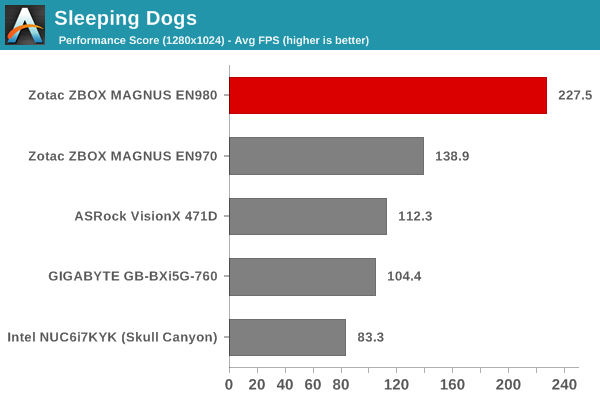

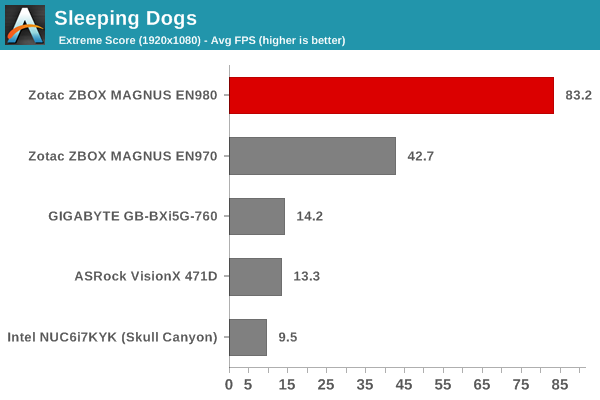
Tomb Raider

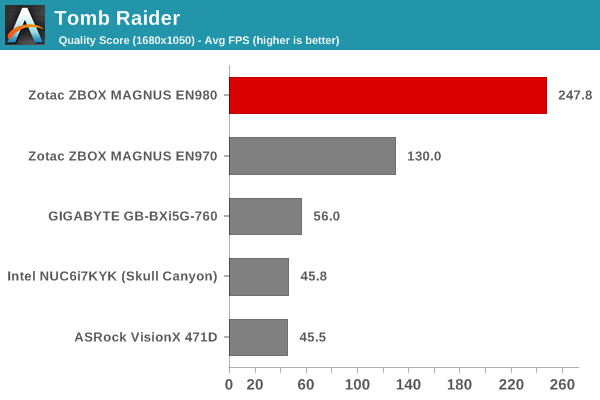
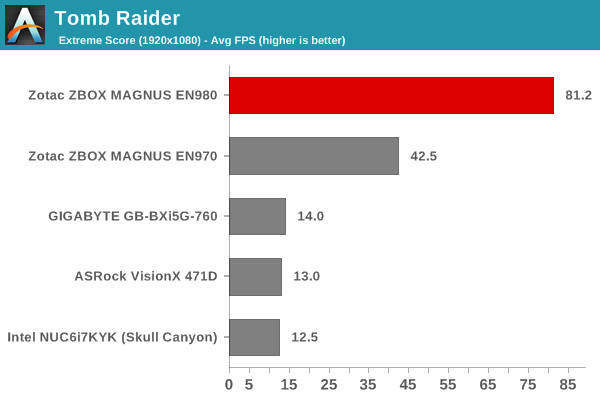
Bioshock Infinite

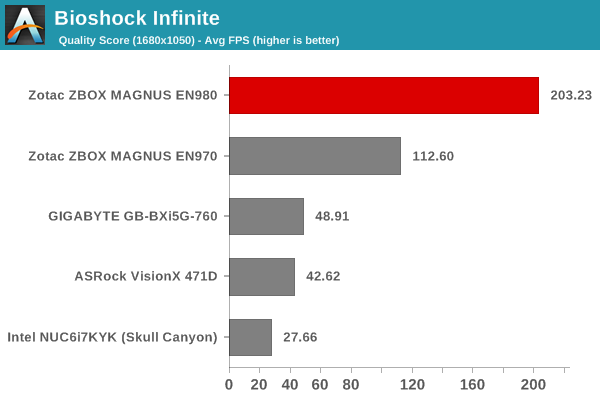
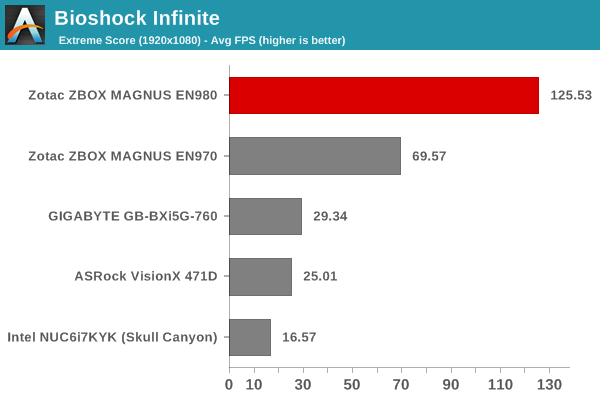
DiRT Showdown
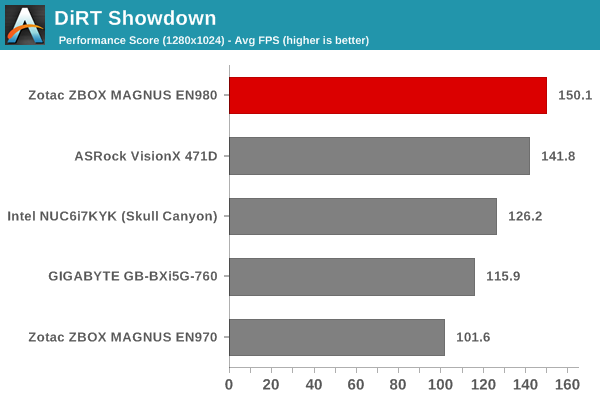
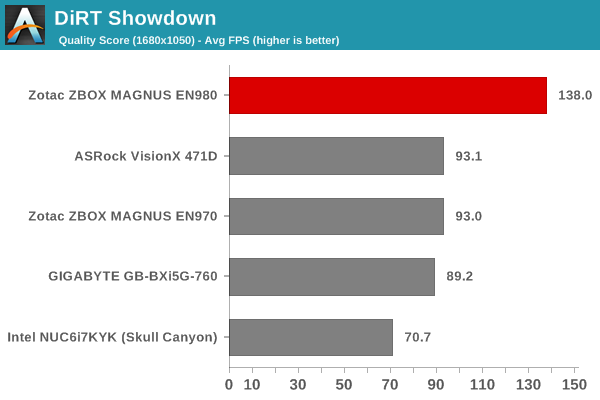
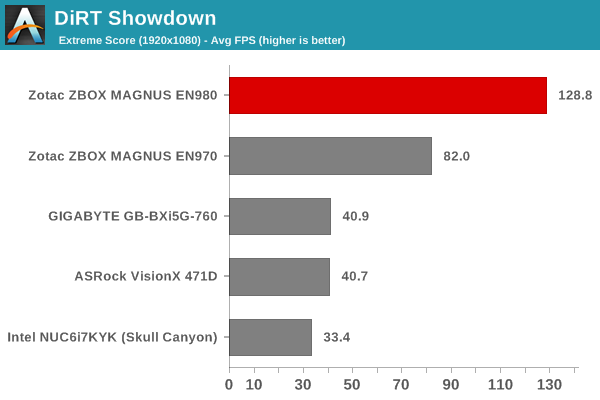
The Talos Principle
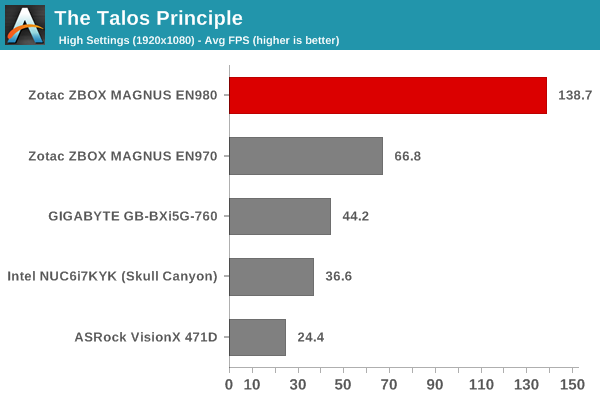

GRID Autosport
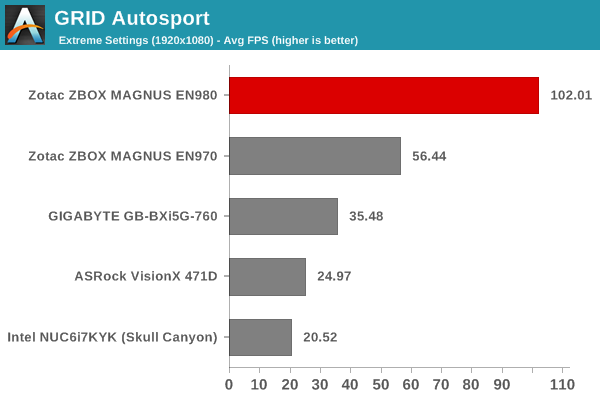
The graphs speak for themselves. The MAGNUS EN980 blows every other gaming mini-PC to smithereens. Tt does have a slightly bigger footprint and much higher power budget compared to the rest of the systems in the above graphs. But, that shouldn't take away any sheen from the immense gaming prowess that can now be obtained in a SFF machine.










30 Comments
View All Comments
Karthik Subramani - Thursday, August 25, 2016 - link
I agree. We are still a little behind viable consumer high end VR experiences for such a claim.Shadowmaster625 - Thursday, August 25, 2016 - link
$1600. Hahahhahahah. Put down the crack pipe man.lament - Thursday, August 25, 2016 - link
Seriously.. barebones was earlier reported to be $800 or $900.xenol - Thursday, August 25, 2016 - link
Now that NVIDIA is making their mobile and desktop chips the same, maybe it's time for the MXM module to enter the DIY market in full swing. Hopefully MXM has standardized chip layouts so cooling components can be standardized to a degree. The only thing I hope is that if MXM does enter the DIY market, they won't cost an arm and a leg more (mobile versions of high end GPUs tend to run $800+ on eBay).I would certainly like to go even smaller than my current <15L case.
Tchamber - Thursday, August 25, 2016 - link
This is a nice little system. It would be more compelling if it were configurable, though.The_Assimilator - Thursday, August 25, 2016 - link
Zotac should get a round of applause for bringing this to market. Then a kick in the 'nads for only supplying 4 rear USB ports. What a waste of all the HSIO lanes."We purposefully didn't disassemble it fully to ensure that its thermal design was not compromised."
Seriously? The most interesting part about this machine is how Zotac managed to shoehorn in a GTX 980 and keep everything cool, and you don't bother to show that?
Also, if you consider 70dB quiet, I don't want to know what you consider loud.
ganeshts - Thursday, August 25, 2016 - link
After 6+ years of reviewing equipment, I invariably find either readers or manufacturers wanting me to rerun one benchmark or the other. For straightforward systems, it is fine after reassembly, but, this one was quite different since I didn't have the time bandwidth to do a full teardown. In any case, Zotac has a nice graphic indicating how the CPU and GPU are placed on the board and how the watercooler / pump are arranged in this location:https://www.zotac.com/download/files/overview/en98...
This has been linked in the text too.
As for 70 dB - note that it is at maximum stress, and with the microphone placed right on top of the unit. It is unlikely that the unit will be subject to that much load, and even if it is, it is probably some intensive game or the other - the audio from those titles will easily drown out the fan / pump noise.
It is also important to stress that it is a rough estimate - the readings were not carried out in a soundproof room and no special care was taken during the recording of the graph. I can say subjectively that is is much more silent compared to any other non-watercooled desktop PC I have seen or built. I encourage you to check it out in person if you can (or, you can pitch this to the SPCR guys and they will provide you a more reliable verdict that can be the final word - after all, that is their speciality).
fanofanand - Thursday, August 25, 2016 - link
This response gets the Family Feud seal of approval. "Good answer! Good answer!"Morawka - Thursday, August 25, 2016 - link
Your link is bad. Access denied is what i get when i click on it.The_Assimilator - Friday, August 26, 2016 - link
An exploded block diagram of a system, provided by the hardware manufacturer, is hardly the same as an actual look at the hardware. It tells us nothing about the quality of components used and whether they're sufficient. Thankfully Linus has done a complete teardown of the system: https://www.youtube.com/watch?v=5Qu7qckqulY